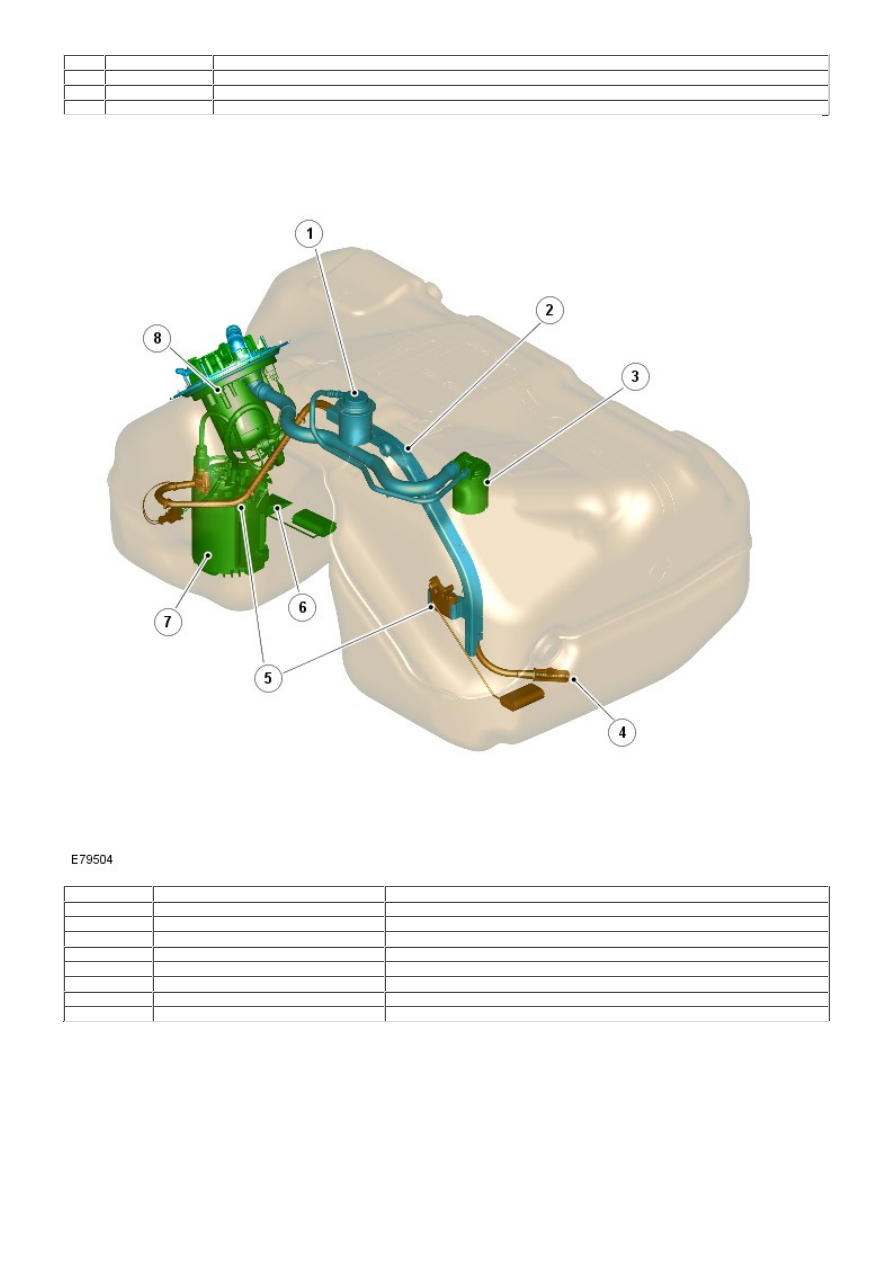Frelander 2. Manual - part 389

5
-
Vapor pipe to evaporative emission canister
6
-
Vapor purge pipe to intake manifold
7
-
Fuel delivery pipe to engine
8
-
Breather pipe
Item
Part Number
Description
1
-
Roll Over Valve (ROV)
2
-
Crossover tube assembly
3
-
Fill limit vent valve
4
-
Coarse fuel filter
5
-
Fuel gage sender units
6
-
Primary fuel filter
7
-
Fuel delivery module
8
-
Fuel filter element
OVERVIEW
The 70 liter saddle-type fuel tank is located below the rear seat and astride the driveshaft.
The fuel tank is manufactured using the latest six-layer laminated blow-molding technology providing both high mechanical
strength and complete emissions integrity. The fuel filler neck is produced from aluminum to balance high-strength with
low-weight. In the event of an accident damaging the filler neck, an inlet check valve in the tank's filler stub prevents fuel
escaping.
A single pump supplies the engine's fuel demands while also supplying the fuel to power the venturi. The rapid flow of fuel
through the venturi nozzle creates a depression which draws fuel back across the saddle into the pump side of the tank.
The fuel gage senders are sealed units which use magnetic actuation in place of electrical contacts; this prevents the